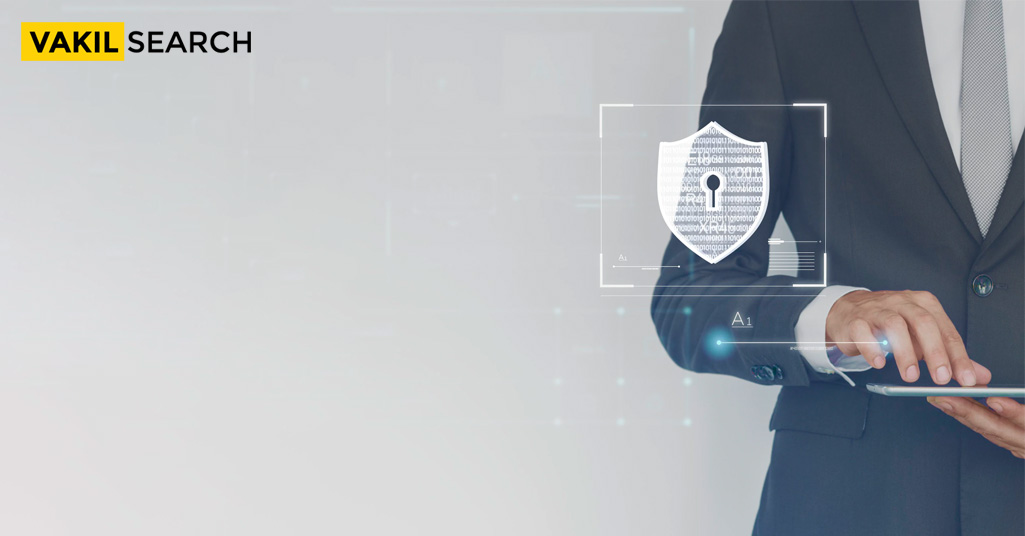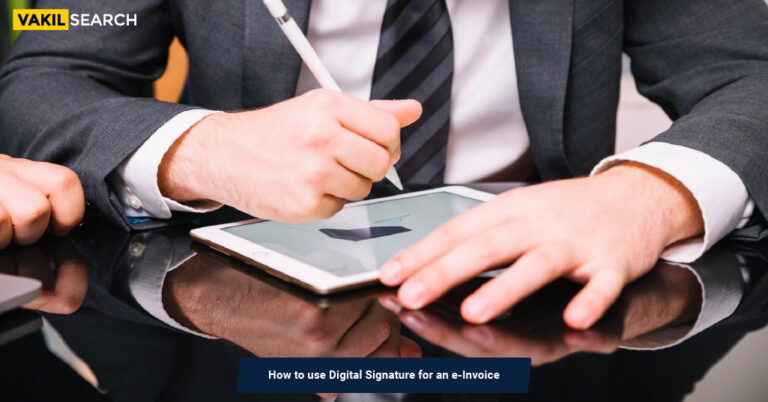Digital signatures have become an essential part of modern business operations. With the rise of remote work and digital transformation, electronic signatures have replaced traditional paper-based signatures in most businesses.
Overview on Electronic Signatures in India
As technology continues to advance, the way we conduct business and handle documentation has transformed significantly. One of the essential developments in the digital era is the adoption of e-signature software, enabling individuals and organizations to sign documents electronically. In this comprehensive guide, we will explore the world of e-signature software, how it works, the various types available, testing procedures, and the difference between digital and electronic signatures. Additionally, we will delve into the future scope of digital signatures and the new rules governing their creation in 2023.
What is E-Signature Software?
E-signature software is a digital tool designed to facilitate the electronic signing of documents, contracts, agreements, and other legal forms. It offers a secure and convenient way to authenticate signatures without the need for physical paperwork or in-person signatures. E-signatures are legally binding in most jurisdictions, making them a reliable alternative to traditional pen-and-paper signatures.
How Does E-Signature Software Work?
Signature Creation: When a user signs a document using e-signature software, the application generates a unique digital signature for that specific document. This signature is cryptographically tied to the signer’s identity and the content of the document.
Authentication: E-signature software verifies the identity of the signer through various authentication methods, such as email verification, SMS codes, or biometric authentication. This ensures that only authorized individuals can sign the document.
Tamper Detection: To maintain the integrity of the signed document, e-signature software employs tamper detection mechanisms. Any alterations or modifications made to the document after it’s signed will invalidate the signature, ensuring document integrity.
Encryption: E-signature solutions use encryption protocols to safeguard the signed documents and the associated signatures during transmission and storage, ensuring they cannot be tampered with or intercepted.
What Types of E-Signature Software Are There?
On-Premises E-Signature Software: This type of software is hosted on the organization’s servers and provides complete control over data security and customization. However, it requires a dedicated IT infrastructure to maintain and can be costlier to set up.
Cloud-based E-Signature Software: Cloud-based solutions are hosted on the vendor’s servers and accessed through the internet. They are more flexible, scalable, and cost-effective since they eliminate the need for extensive IT infrastructure.
Open-source E-Signature Software: Open-source solutions offer the advantage of customization and community-driven development. Organizations can modify the software according to their specific needs, but it may require more technical expertise to implement and maintain.
How E-Signature Software is Tested
The reliability and security of e-signature software are crucial, especially when it comes to handling sensitive legal documents. Therefore, thorough testing is essential, and it typically involves the following steps:
Functional Testing: This involves testing the basic functionality of the software, such as signature creation, authentication, document encryption, and tamper detection.
Security Testing: The software undergoes rigorous security testing to identify vulnerabilities and ensure that user data and documents are protected against unauthorized access and data breaches.
Compliance Testing: E-signature software must comply with various industry standards and legal regulations, such as eIDAS in Europe and the ESIGN Act in the United States. Compliance testing ensures adherence to these regulations.
Usability Testing: Usability testing assesses the user-friendliness of the software, ensuring that even non-technical users can easily navigate and utilize the application.
Benefits of Digital Signature Tools
Time-Saving
Digital signature tools save time by eliminating the need for physical signatures. In traditional paper-based systems, signatures require printing, scanning, and mailing or physically delivering the documents. This process can take several days or even weeks. However, digital signature tools enable users to sign documents electronically in a matter of minutes. This feature is especially beneficial for businesses that require signatures on a large number of documents, such as legal firms, financial institutions, and government agencies.
Cost-Effective
Digital signature tools eliminate the need for physical signatures, reducing the cost of paper, ink, postage, and storage space. In addition, electronic signatures enable businesses to streamline their workflow, reducing the cost of manual processing. By reducing the cost of paper and manual processing, businesses can save money and invest it in other areas of their operations.
Increased Security
Digital signature tools offer increased security compared to traditional paper-based signatures. Electronic signatures use encryption to ensure that the document and signature are tamper-proof. In addition, digital signature tools store the signed documents securely in the cloud, ensuring that they are accessible only to authorised users. This feature is especially important for businesses that handle sensitive information like financial data, legal documents, and medical records.
Increased Efficiency
Digital signature tools offer increased efficiency by eliminating the need for manual processing. Electronic signatures enable businesses to automate their workflow, reducing the time and effort required to send, sign, and manage documents. In addition, digital signature tools offer features like document templates, automated workflows, and integration with other tools, enabling businesses to streamline their operations and increase efficiency.
Legal Validity
Digital signature tools offer legal validity under the Information Technology Act, 2000. The act recognises digital signatures as legally binding and admissible in court. This feature is especially beneficial for businesses that require signatures on legally binding documents, such as contracts, agreements, and deeds.
Top Tools For Creating and Managing Digital Signatures 2023
Adobe Sign: Adobe Sign is a cloud-based solution that enables users to create, send, and manage electronic signatures securely. It offers various features like document tracking, automated workflows, and integration with other Adobe tools.
DocuSign: DocuSign is one of the most popular electronic signature solutions in the market. It provides users with the ability to create, sign, and manage documents electronically. It also offers features like document templates, custom branding, and mobile accessibility.
SignNow: SignNow is another popular digital signature tool that provides users with a simple and intuitive interface for creating and managing electronic signatures. It offers features like document templates, signature fields, and integration with other popular tools like Google Drive and Dropbox.
HelloSign: HelloSign is a cloud-based electronic signature tool that enables users to create and send legally binding documents securely. It offers various features like document templates, custom branding, and integration with other popular tools like Salesforce and HubSpot.
SignEasy: SignEasy is a mobile-friendly digital signature tool that enables users to sign documents on the go. It offers various features like document templates, custom branding, and integration with other popular tools like Google Drive and Dropbox.
These are just a few of the top digital signature tools available in 2023. When selecting a tool, it’s essential to consider factors like ease of use, security, and integration with other tools you use regularly.
Features of Digital Signatures
Authentication
DSC provide authentication, ensuring that the person who signed the document is the one who is authorised to do so. Digital signatures use a unique digital ID, which is issued by a trusted authority, to authenticate the signer’s identity.
Non-Repudiation
Digital signatures provide non-repudiation, ensuring that the signer cannot deny that they signed the document. Digital signatures use encryption to ensure that the document and signature are tamper-proof. Once the document is signed, it cannot be altered or modified without invalidating the signature.
Integrity
Digital signatures provide integrity, ensuring that the document has not been altered or tampered with since it was signed. Digital signatures use hash algorithms to create a unique fingerprint of the document, which is encrypted with the signer’s digital ID. Any changes to the document will result in a different hash value, which will invalidate the signature.
Security
Digital signatures provide security, ensuring that the document and signature are protected from unauthorised access. Digital signatures use encryption to protect the document and signature from interception or modification during transmission. In addition, digital signatures are stored securely in the cloud, ensuring that they are accessible only to authorised users.
Efficiency
Digital signatures offer increased efficiency compared to traditional paper-based signatures. Electronic signatures enable users to sign documents electronically in a matter of minutes, eliminating the need for printing, scanning, and mailing or physically delivering the documents. In addition, digital signature tools offer features like document templates, automated workflows, and integration with other tools, enabling businesses to streamline their operations and increase efficiency.
Legal Validity
Digital signatures offer legal validity under the Information Technology Act, 2000. The act recognises digital signatures as legally binding and admissible in court. This feature is especially beneficial for businesses that require signatures on legally binding documents, such as contracts, agreements, and deeds
How to Sign Documents Online: Digital Signature vs. Electronic Signature
The terms “digital signature” and “electronic signature” are often used interchangeably, but they have distinct differences:
Digital Signature: A digital signature is a type of electronic signature that uses cryptographic techniques to create a unique identifier for the signer and the document. It offers a higher level of security and is often used for more critical or legally binding documents.
Electronic Signature: An electronic signature, on the other hand, is a broader term that encompasses any method of signing a document electronically. This can include digital signatures, as well as simple electronic symbols, typed names, or even checkboxes.
Frequently Asked Questions
What is the Future Scope of Digital Signature?
The future scope of digital signatures is promising, as the global adoption of digital transformation continues to accelerate. As businesses and governments strive for efficiency, security, and sustainability, digital signatures will play a crucial role in streamlining processes, reducing paper usage, and ensuring document authenticity.
What are the New Rules of Digital Signature in 2023?
The specific rules governing digital signatures can vary by region and country. In 2023, some jurisdictions may update or introduce new regulations to address evolving cybersecurity concerns and ensure the legal validity of electronic signatures. Stay updated with local laws and industry standards to comply with the latest requirements.
What are the 3 Steps in Creating a Digital Signature?
The process of creating a digital signature typically involves three main steps: Signer Authentication: The signer's identity is verified through authentication methods like email verification, phone verification, or biometric identification. Document Hashing: A cryptographic hash function generates a unique hash value that represents the content of the document without revealing the actual content. Private Key Signing: The signer's private key encrypts the hash value, creating the digital signature that is attached to the document.
What is Rule 4 of the Creation of Digital Signatures?
As of my knowledge cutoff in September 2021, there isn't a universally recognized Rule 4 for the creation of digital signatures. However, different standards and regulations may include specific guidelines or rules concerning the technical and legal requirements for creating valid digital signatures. Always refer to the relevant laws and standards in your jurisdiction for the most up-to-date information.
What are digital signatures, and why are they important in 2023?
In 2023, digital signatures will play a vital role as electronic signatures that employ cryptography to authenticate and ensure the document's authenticity and integrity. Their significance stems from the numerous advantages they offer over traditional handwritten signatures. Notably, digital signatures provide unmatched convenience by enabling electronic application to documents, sparing the need for printing, manual signing, and scanning, thereby saving valuable time and effort, particularly beneficial for high-document-volume businesses and organisations. Enhanced security is a key attribute, as digital signatures are challenging to forge or tamper with, surpassing the security of wet signatures. Additionally, their widespread legal recognition in many jurisdictions, including India, grants them the status of being legally binding, rendering them a preferred choice for signing contracts, agreements, and various legal documents.
How do digital signatures enhance document security in the modern era?
Digital signatures enhance document security in the modern era by using cryptography to verify the authenticity and integrity of a document. When a digital signature is applied to a document, it creates a unique electronic seal that is linked to the signer's digital certificate. This seal cannot be easily forged or tampered with, which helps to protect the document from fraud and alteration.
Can you explain the key benefits of using digital signature tools in 2023?
In 2023, digital signature tools offer a range of significant advantages. Foremost among these is the convenience they bring by enabling electronic document signing, eliminating the need to print, manually sign, and then scan documents. This streamlined process results in time and effort savings, especially beneficial for businesses and organisations with high document signing volumes. Enhanced security is another key benefit, with digital signature tools employing cryptography to safeguard documents from fraudulent activities and alterations. Moreover, digital signatures are widely recognised as legally binding in many jurisdictions, including India, making them a preferred choice for signing contracts and legal documents. These tools also boost efficiency by streamlining workflows and expediting the approval process for various agreements, ultimately improving business processes. Additionally, they contribute to cost savings by reducing expenses associated with printing, scanning, and postage.
What are some popular tools for creating digital signatures in 2023?
Some popular tools for creating digital signatures in 2023 include DocuSign,.Adobe Sign, HelloSign, SignNow, eSignly.
Are there any free or open-source options for digital signature creation and management tools in 2023?
Yes, there are a few free and open-source options for digital signature creation and management tools in 2023. Some of these options include LibreOffice Draw, Apache OpenOffice Draw, Inkscape, GIMP.
What should individuals and organisations look for when choosing a digital signature tool in 2023?
When making a choice regarding a digital signature tool in 2023, individuals and organisations should take into account several critical considerations. Firstly, the tool's security is paramount, requiring robust cryptography to safeguard documents against fraud and unauthorised alterations. Additionally, compliance with pertinent laws and regulations, particularly those applicable to the document's jurisdiction, is crucial. User-friendliness is also a key factor, with the tool needing to be easily navigable for both the signer and the recipient. Furthermore, the tool's feature set should align with specific needs, encompassing capabilities like batch signing, template creation, and digital signature tracking. Finally, affordability and value for the investment are vital aspects to assess when selecting a digital signature tool.
How has the landscape of digital signature tools evolved since 2022?
Digital signature tools have undergone significant transformation since 2022, with a noticeable trend toward cloud-based solutions. These cloud-based options bring several benefits compared to traditional on-premises solutions. Notably, they offer cost-effectiveness by eliminating the need for businesses to invest in their own hardware and software. Furthermore, cloud-based digital signature solutions provide scalability, allowing businesses of various sizes to easily adjust their capacity to match their specific requirements.
What legal considerations should one be aware of when using digital signatures in 2023?
In the realm of digital signatures in 2023, it is crucial to remain mindful of essential legal aspects. First and foremost, compliance with pertinent laws and regulations, particularly those of the document's jurisdiction, is imperative. Consent from both the signer and the recipient is a fundamental requirement for the use of digital signatures. Ensuring the security and reliability of the chosen digital signature tool is vital. Additionally, digital signatures should be capable of withstanding legal scrutiny when presented in a court of law.
Can you provide insights into the future trends and advancements in digital signature technology for 2023 and beyond?
The future of digital signature technology appears promising, with several anticipated trends and innovations set to shape 2023 and beyond. One notable trajectory is the increasing adoption of digital signatures in both business and consumer realms, driven by a growing awareness of their advantages. Furthermore, we can expect the emergence of novel technologies, such as blockchain and artificial intelligence (AI), to pave the way for more secure and innovative digital signature solutions, potentially transforming the way we sign and validate documents. Another noteworthy development is the expanding array of use cases for digital signatures, extending beyond traditional realms to encompass applications like signing medical records, legal documents, and even government forms.
Conclusion
E-signature software has revolutionized the way businesses and individuals handle document signing in the digital age. With advanced security measures and authentication techniques, digital signatures offer a secure and legally binding alternative to traditional pen-and-paper signatures. As technology continues to evolve, the future scope of digital signatures is promising, with increased efficiency, reduced paperwork, and enhanced security. By understanding the different types of e-signature software, the testing procedures involved, and the distinction between digital and electronic signatures, you can confidently navigate the world of digital signatures in 2023 and beyond. Remember to stay informed about the latest rules and regulations governing digital signatures to ensure compliance and trust in your electronic transactions.
Also, Read:










